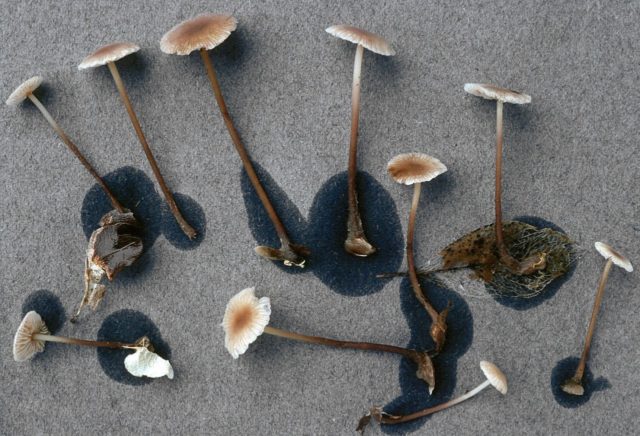Content
Branching iris or branch marasmiellus, the Latin name is Marasmius ramealis. The mushroom belongs to the family of Negniychnikovye.
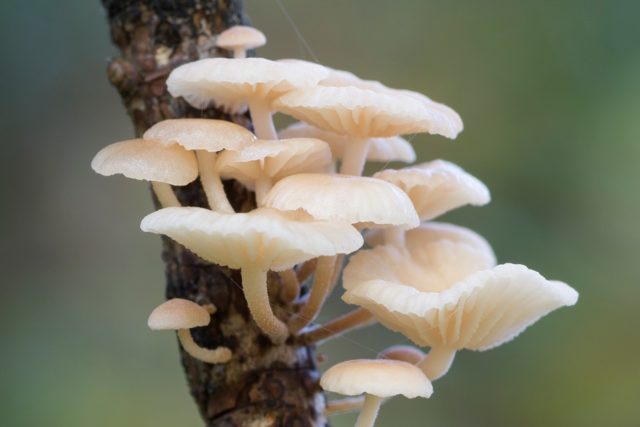
The lamellar non-iron pot consists of a central leg and a cap
What does the branchless non-potting plant look like?
Small fragile fruiting bodies with a uniform color and a darker fragment in the central part of the cap. The color is creamy with a pinkish tinge, does not change during the entire growing season.
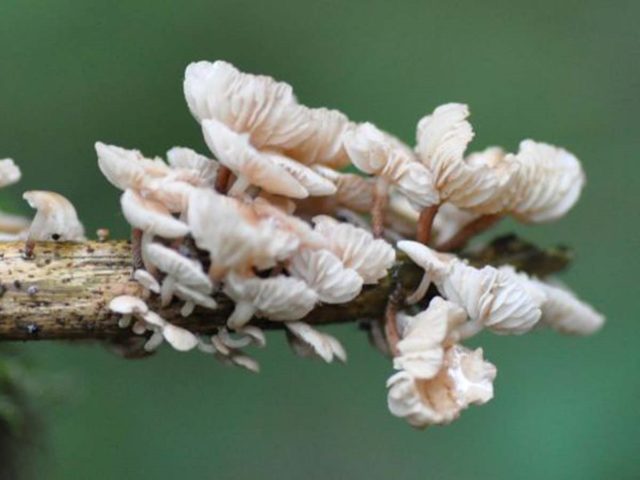
In wet weather, the surface is slightly slimy
Description of the hat
The shape changes during the growing season, in young specimens it is rounded, convex, of the correct shape. Then a depression appears in the center, the cap becomes prostrate with concave wavy or even edges.
External characteristic:
- diameter in mature specimens is within 1.5 cm;
- the surface is silky, glossy, with slight radial ribbing along the edge;
- spore-bearing layer of white with a pink tint;
- the plates are loose, thin, sparsely located, and do not change color when the spores mature.
The pulp is white, monochromatic, thin and fragile, the structure is springy.
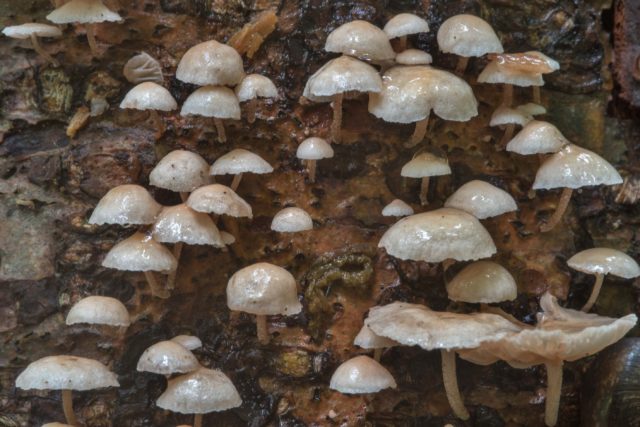
Young mushrooms are all the same and proportional in shape
Leg description
The stem is cylindrical, thin, central. If the mushroom cluster is compact, it can be curved in the central part. In single specimens, it grows upright. The structure is fine-fibered and brittle, the middle is hollow. The surface is colored the same as the upper part of the fruiting body, perhaps a tone darker near the mycelium.
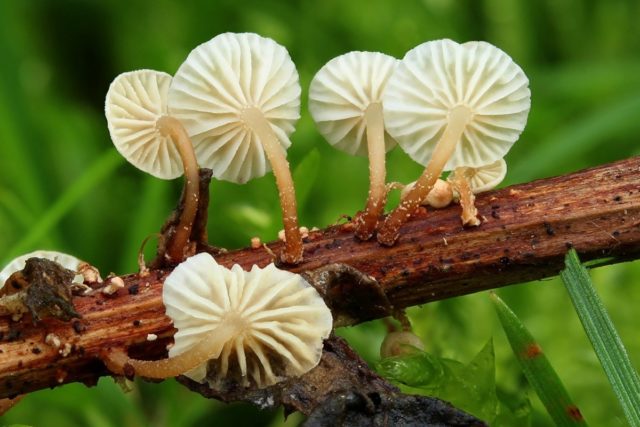
The surface of the leg is covered with flocculent segments
Where and how it grows
The sprigel nematus is widespread in Russia throughout the European part, the Primorsky Territory, Siberia and the Caucasus. Saprophytes grow on decaying wood, mainly on branches, less often on stumps in a damp, shaded place. Long-term fruiting - from June to the onset of winter. Forms dense colonies occupying vast areas, single specimens are almost never found.
Is the mushroom edible or not
Due to its small size and fine structure of the fruiting body, it does not represent nutritional value.
There are no toxins in the chemical composition, but non-nematous sprig is a poorly studied species, therefore, use is undesirable.
Doubles and their differences
Outwardly, the oak garlic looks like a branch marasmiellus. The fruiting body is small in size, but the color is darker with a pale yellow tint and a brown fragment in the center of the cap. It grows on leaf litter or wood debris, mainly under oak trees. The species is conditionally edible.
A mushroom with a pungent garlic smell, it is used as a seasoning
Conclusion
Twig nematozoa is a small mushroom that grows on fallen branches or decaying stumps. Due to the structure of the fruiting body and the insignificant size of the nutritional value, it does not represent a branchless inedible species. Fruiting in compact groups from the beginning of summer until the onset of frost.
